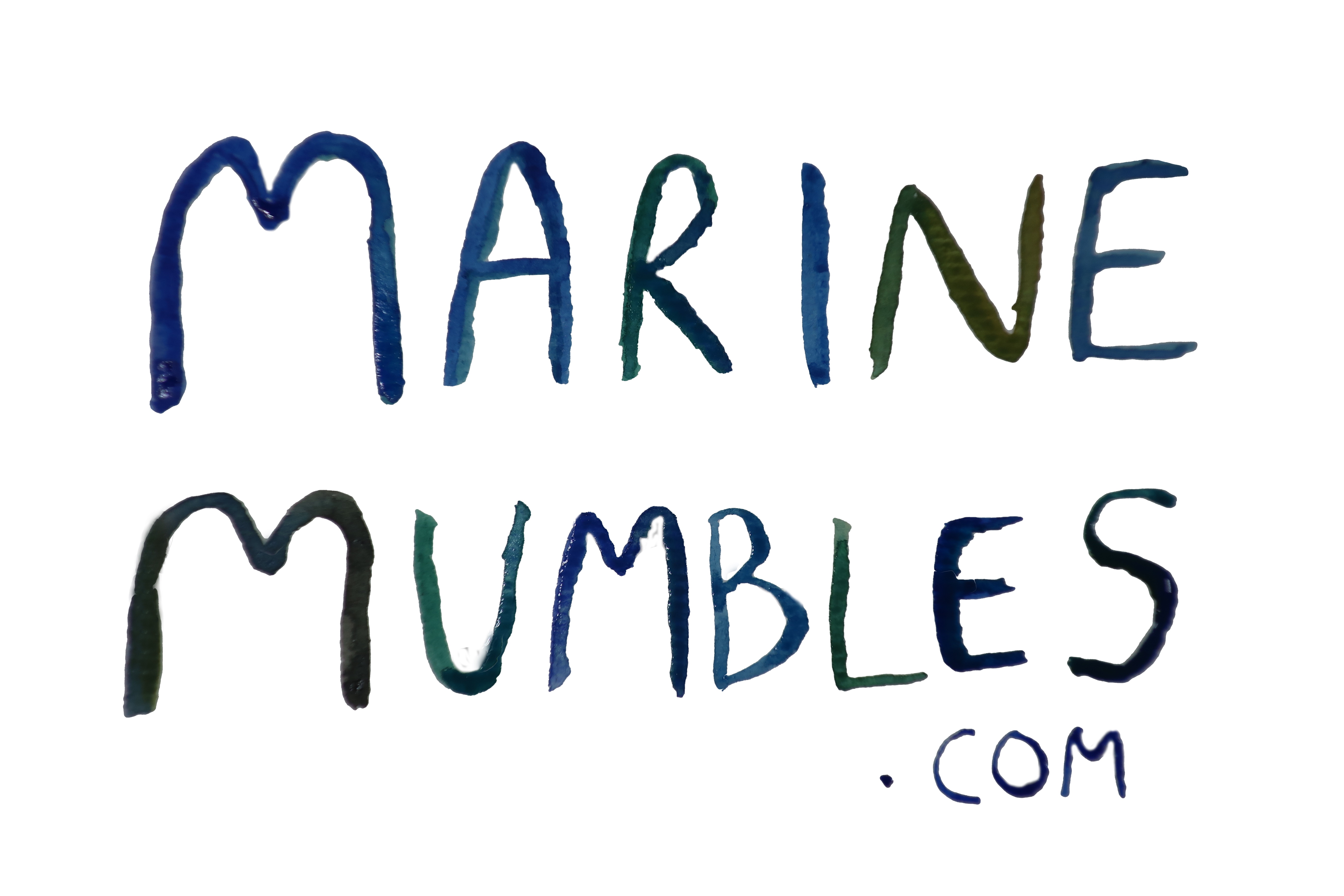Seaweeds are a very important part of the rocky shore ecosystem. They are primary producers, meaning they use photosynthesis to get their energy and are at the bottom of the food chain. They are grazed upon by other invertebrate species on the rocky shore.
Ulva lactuca and Ulva intestinalis are probably two of the most common species found on UK shores. There are other species of Ulva, but they can only really be identified in the lab and even then they are difficult to distinguish, so.. *subtle cough* we shall ignore them. Alva lactuca‘s common name is sea lettuce, because well it looks a bit like lettuce underwater. It has a disc shaped holdfast (equivalent of roots in plants), that it uses to attach onto hard substrate but is very small compared to other seaweed species holdfasts’. There is no stipe (the equivalent of a stem in plants), and lots of flat way fronds (equivalent to leaves of a plant) only a few cells thick that come from the central disc holdfast.
Ulva intestinalis is a longer seaweed with hollow tubes that fill with air to float in the water. It is also bright green but probably a shade darker than Ulva lactuca. I think a seaweed called sea lettuce is pretty cute, its a sweet name for a delicate looking seaweed. However the person who discovered Ulva intestinalis probably had a bit of a different personality to the person who named sea lettuce because Ulva intestinalis‘s common name is gutweed. I can understand why as this species does look like what I imagine an aliens intestines to look like, but still its not the prettiest of names. On the plus side both the species common names make it super easy to remember!
Like most species on the rocky shore, many seaweeds can only be found in a particular zone of the shore. Where seaweeds can survive heavily depends on the light availability, space for attachment to hard substrate, desiccation levels and predation by invertebrates.
One factor that helps attachment of these species is that they have small holdfasts and can therefore be found in a variety of locations such as rocky shores, sandy shores and they can be epiphytic on algae (live on other seaweeds, see below), as they need very little space to attach too. It is also common for them to become unattached and they can still survive floating through the water clumping together.
Unlike most other seaweeds Ulva lactuca and Ulva intestinalis have a tidal range from upper shore to lower shore and are common on most of the areas in the UK. One handy trick that these species implement to survive high on the shore is that they can bleach and still survive. Too much light and heat exposure can actually destroy the photosystems involved in photosynthesis, killing the cells. Ulva species use this to there advantage letting the first few layers of cells bleach and die, but in doing so these layers turn white and they reflect a lot more sunlight. This therefore protects the rest of the individual from desiccation, obviously continuously high light levels may eventually kill of the individuals but lets be honest when has that ever been a major problem in the UK?.
Compared to some other seaweeds on the shore Ulva species are also very fast growing and therefore they are normally one of the first species to settle. This trait also means they can be useful in detecting changes to the environment/quality of the water, for example if there is higher nutrients from pollution, fertiliser or land run off etc. Usually the combination of excess nutrients (usually excess phosphorous triggers growth in macroalgae) and longer time in the sunlight (if its summer), creates the ideal conditions to grow fast, the result of which is referred to as a macroalgal bloom.

Minster Beach, Kent. Transformed from being totally sandy to completely covered in Ulva intestinalis for a few weeks in summer 2016.
This summer for a few weeks Minster beach (above) was completely covered in Ulva intestianlis and I had never seen it like that before despite living there my whole life. I have no idea really why there was so much, but I thinks its a good example of and Ulva bloom.
Blooms of seaweeds can be a problem as it also leads to increased breakdown and decomposition from the denser amount of seaweed in the area. The bacteria involved in such breakdown reduce the amount of oxygen in the water column. This process is called eutrophication and in areas where there is not a regular supply of new oxygenated water the oxygen levels can drop so low that fish can die, and can be a major environmental problem. Therefore, Ulva species can be a useful tool to monitor changes to pollution levels and can trigger people to monitor the nutrient levels in the water. Hopefully then the source of the pollution can be found and reduced.
Hopefully you will have seen these species before if you have ever been rock pooling and now know a bit more about them! If not next time your down the beach I would be very surprised if you didn’t see either one of these species so make sure you check them out!
As always please follow me on twitter and Instagram and comment below any questions! Happy Rockpooling!




